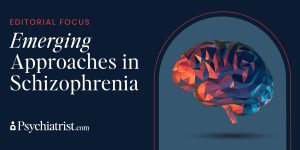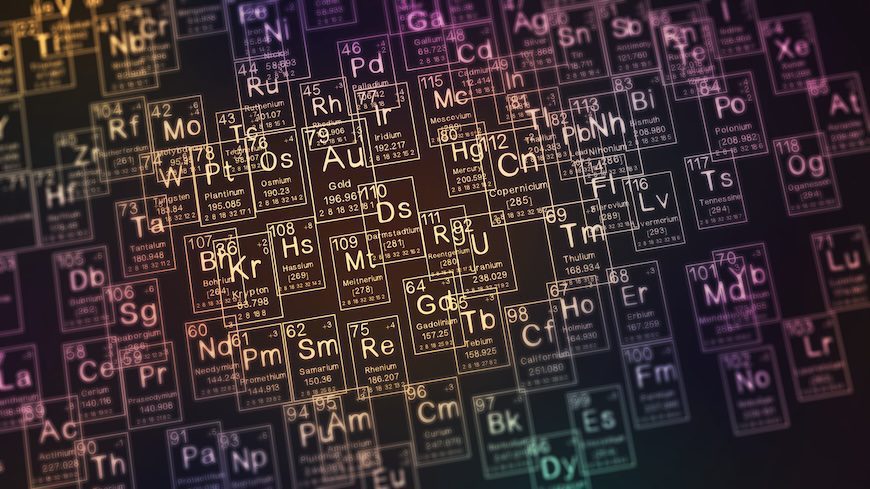Noninvasive brain stimulation has emerged as a groundbreaking new treatment for a variety of mental health disorders from PTSD to depression. It’s even getting traction in primary care settings. Now, new research shows that intermittent theta burst stimulation might help adults struggling with schizophrenia. The study highlights the treatment’s potential to address negative, depressive, anxiety, and cognitive symptoms while preserving an acceptable safety profile.

“The left dorsolateral prefrontal cortex (DLPFC) is connected to parts of the brain, which are associated with the pathophysiology of schizophrenia, and its impairment may play a crucial role in the negative and cognitive symptoms,” lead author Taro Kishi, MD, PhD, explained in a press release. “Therefore, this is a promising target for treating negative and cognitive symptoms in people suffering from schizophrenia.”
Methodology and Key Results
Kishi and associates organized a systematic review and network meta-analysis of 30 randomized controlled trials that included more than 1,400 patients.
The investigation revealed that iTBS over the L-DLPFC dramatically cut scores on measures of negative symptoms, depressive and anxiety symptoms, and overall cognitive impairment compared to sham treatments.
The results, the researchers insist, suggest that iTBS targets underactive brain regions implicated in schizophrenia’s complex symptomatology. That hints at its potential as a therapeutic for the disorder’s harder-to-treat facets – especially the cognitive and affective dysfunctions.
It’s also worth noting that the researchers observed that iTBS had no significant impact on schizophrenia positive symptoms – such as hallucinations and delusions – or the rates of treatment discontinuation due to adverse events.
How It Works
Theta burst stimulation (TBS) is a non-invasive brain stimulation method that delivers short bursts of magnetic pulses. It’s a more time-efficient alternative to conventional repetitive transcranial magnetic stimulation (rTMS), which the U.S. Food and Drug Administration (FDA) approved to treat major depressive disorder (MDD) and obsessive-compulsive disorder (OCD). By targeting the L-DLPFC, an area of the brain tied to executive function and emotional regulation, scientists have useed TBS to temper neural activity as a way to treat symptoms.
The L-DLPFC’s extensive neural connections – with links to the orbitofrontal cortex, basal ganglia, and hippocampus – make it a prime target for tackling schizophrenia’s cognitive and emotional symptoms.
The review included nine TBS protocols applied to mulitple brain regions, including continuous TBS (cTBS) and iTBS at other cortical sites. Only iTBS – over the L-DLPFC – revealed notable benefits, underscoring its singular efficacy in easing schizophrenia symptoms.
The data also revealed that higher antipsychotic doses and increased stimulation pulses during the trials led to greater improvements, especially in negative symptoms. This led the study’s authors to believe that one treatment alternative might lie in the collaboration of pharmacological and neuromodulation therapies.
A Few Caveats
Despite these encouraging results, the paper’s authors argue that researchers must embrace larger-scale research efforts to validate iTBS’s effectiveness and fine tune its protocols.
The researchers also noted that other TBS protocols failed to demonstrate any noteworthy benefits. They attributed that to limited amount of data, alon with a dearth of trials exploring these treatment options. Researching advanced iTBS protocols, such as accelerated treatment schedules, cound boost accessibility and efficacy.
Broader Schizophrenia Treatment Implications
The research results place iTBS over the L-DLPFC as a potential adjunctive schizophrenia treatment that traditional antipsychotics fail to treat adequately. The treatment’s solid safety profile – with little to no jump in adverse events – makes it clinical viability even more apparent.
By targeting symptoms that transcend psychiatric conditions, iTBS could move beyond existing diagnostic classifications, and help with multiple comorbid disorders, such as anxiety and depression. This dovetails with a growing understanding that shared neural mechanisms lie at the heart of multiple mental health disorders.
This new research shines a light on the nascent potential of iTBS as an emerging schizophrenia treatment, battling symptoms that threaten one’s quality of life. As neuromodulation technologies keep moving forward, iTBS could complement existing treatments and reshape the therapeutic landscape for a persistently challenging psychiatric disorder.
Further Reading
Transcranial Magnetic Stimulation in Primary Care
Prospective Study of Brain Wave Changes Associated With Cranial Electrotherapy Stimulation



